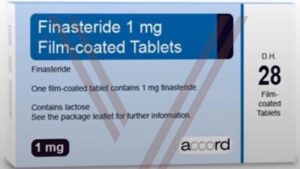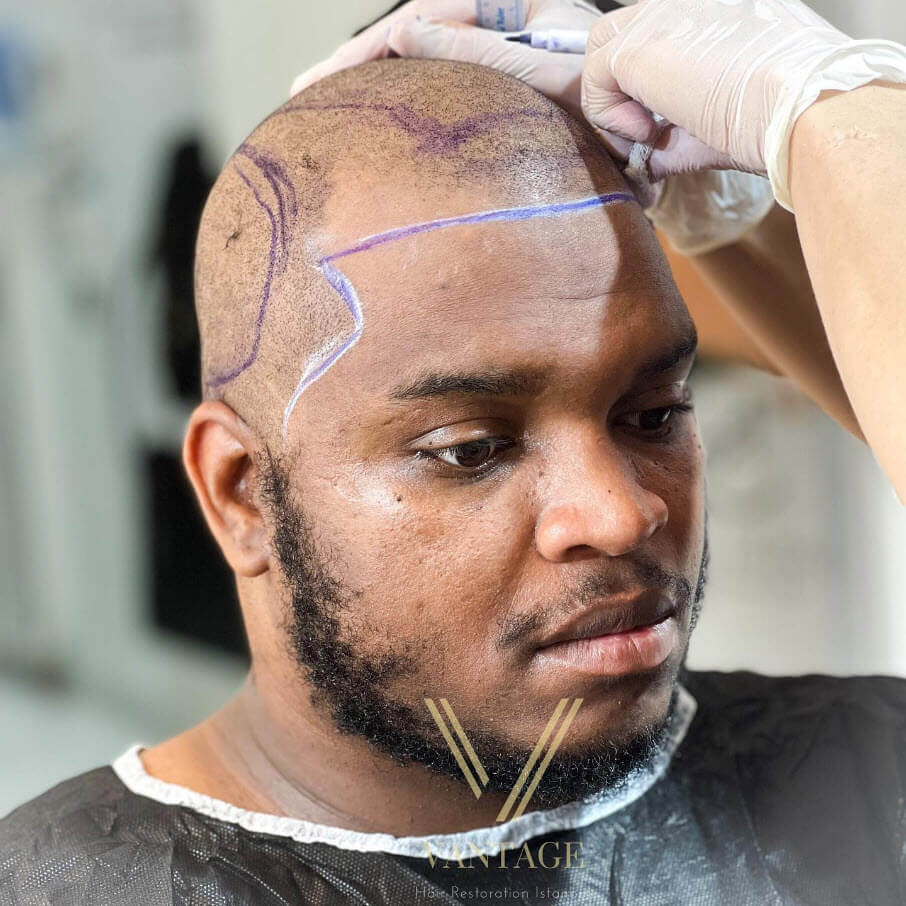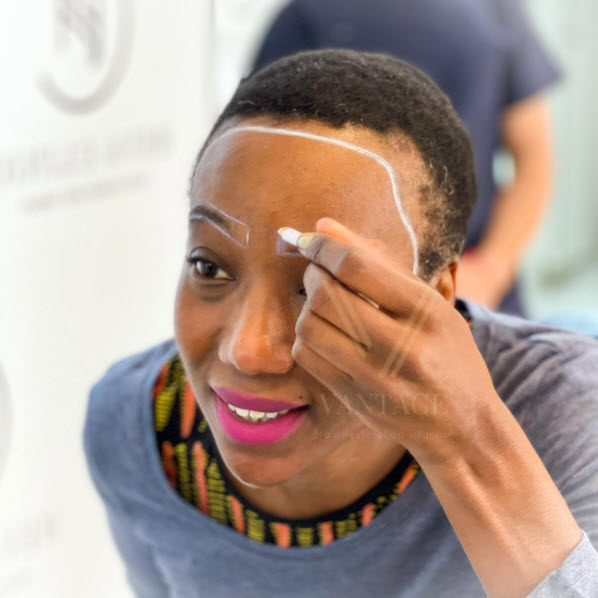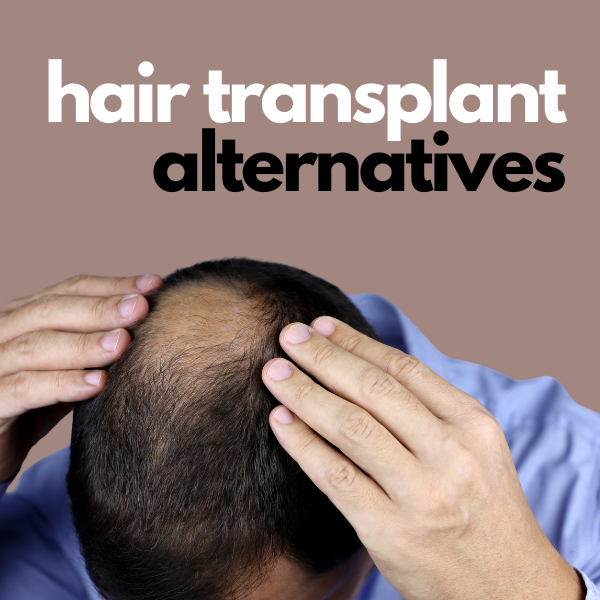
As hair loss is a common issue faced by many, a hair transplant is often considered to be the sole treatment to address it efficiently and permanently. However, not everyone is eligible for a hair transplant. In case you are not a suitable candidate for a hair transplant, you may consider the alternatives available. To help you make the right decision, we have compiled most effective hair transplant alternatives. So, read on to find the best alternative for you.
Alternatives to Hair Transplant
Hair transplant is a popular solution for treating hair loss effectively. However, it may not be a feasible option for everyone due to the high cost in certain locations such as the USA, UK, and other European countries. In such cases, if you have mild to moderate hair loss, there are cheaper alternatives to hair transplant available. Moreover, many of these methods are non-surgical, making them a more convenient option for those who want to avoid surgery.
Are there non-surgical hair loss treatments?
Many people avoid getting a hair transplant because they don’t want to undergo surgery. However, there are several non-surgical options available to treat hair loss. You can choose from medications to PRP therapy to find the best alternative to hair transplant. Let’s take a closer look at these methods.
1. Medications for Hair Loss
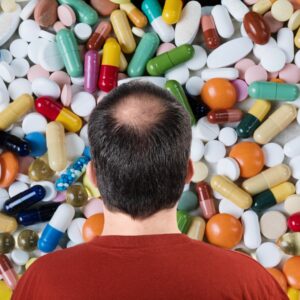
Nowadays, treating many conditions with medications is possible, and hair loss is no exception. There are a plethora of medications, from foams to pills. You can choose the best medication to treat hair loss by consulting with a specialist.
What is the best medicine for hair loss?
There are two well-known medications available to treat hair loss: Finasteride and Minoxidil. Although these medications are not originally designed for hair loss, they have been found to gradually slow down hair loss. It is important to consult an expert to determine which medication is best for your specific needs.
What is minoxidil?
Minoxidil is an FDA-approved topical medication to slow down hair loss. There are different forms of Minoxidil dose for hair loss. Originally, Minoxidil was marketed as a medication that helps balance blood pressure by enhancing blood vessels. This, in turn, enhances blood flow on the scalp and slows down hair loss. Moreover, you can apply Minoxidil for facial hair growth. Hence, it’s feasible to use Minoxidil for women to treat hair loss.
Is minoxidil a steroid?
While Minoxidil is not a steroid, it works as a vasodilator by dilating blood vessels to enhance blood flow and lower blood pressure. It is recommended that you use it only after consulting with a specialist.
How to use minoxidil?
To use topical Minoxidil, start by applying it to a dry scalp with circular movements and gentle massage. Then, let it dry completely before applying any hair care products. It’s important to avoid direct sun exposure immediately after application. Lastly, make sure to use it as prescribed by your healthcare provider.
Is minoxidil effective for hair loss?
Minoxidil has been found to be effective in slowing down hair loss. However, it may not be a standalone solution for severe hair loss treatment. Not everyone experiences significant hair regrowth, and the response to treatment may depend on factors such as the stage of hair loss, the underlying cause, and individual variations.
What is finasteride?
Finasteride is a medication approved by the FDA to treat hair loss. Initially, it was designed to reduce the size of the prostate. The way it works is by acting as a 5-alpha-reductase inhibitor, which stops the conversion of testosterone into dihydrotestosterone, the leading cause of male pattern baldness. With expert monitoring, you can use Finasteride for hair loss.
How to use finasteride?
Since Finasteride is generically taken as a pill, it is important to take it exactly as prescribed by your doctor. Consistency is key, so make sure to take it at the same time every day to experience the desired effects. Additionally, it is important to avoid taking Finasteride with alcohol.
Can finasteride be used in females?
Since Finasteride affects hormonal balance directly, it is not recommended for females to use it. Additionally, expecting and breastfeeding mothers should avoid taking Finasteride as it may cause miscarriage or abnormalities in both the baby and mother. Even though Finasteride may enhance hair growth for women with patterned baldness, it can also result in severe side effects such as irregular menstrual cycles and unwanted hair growth in certain areas. Furthermore, consulting with a healthcare provider before taking Finasteride for hair loss is a must for women.
Is it worth taking finasteride for hair loss?
Finasteride is a treatment that can help individuals suffering from male pattern baldness. It has been proven effective, but its success rate is still lower than that of hair transplant procedures. Nonetheless, the results are still significant and satisfactory for many individuals. Before using Finasteride, it is essential to consider possible side effects and consult a healthcare provider.
2. PRP (Platelet-Rich Plasma) Treatment for Hair Loss
PRP, also known as platelet-rich plasma, is a treatment that uses a patient’s plasma to boost cell growth and rejuvenate skin. It can be used for many purposes elbow joints, skin, and hair.
What is PRP for hair loss?
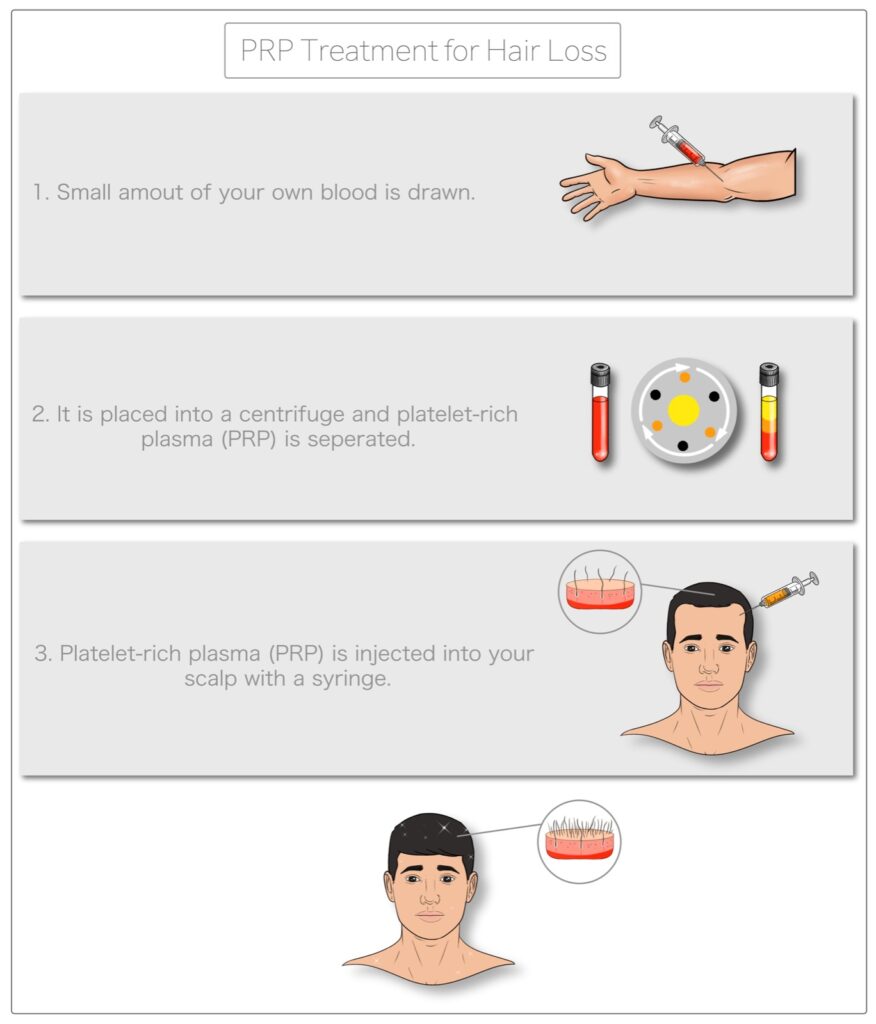 PRP for hair loss treatment is a non-surgical procedure that harnesses the body’s growth factors to stimulate hair growth. PRP contains growth factors that nourish the hair follicles, support healing, and encourage hair regrowth. PRP hair treatment is a viable choice for people experiencing hair loss.
PRP for hair loss treatment is a non-surgical procedure that harnesses the body’s growth factors to stimulate hair growth. PRP contains growth factors that nourish the hair follicles, support healing, and encourage hair regrowth. PRP hair treatment is a viable choice for people experiencing hair loss.
Does PRP work for hair loss?
PRP treatment for hair is an effective solution for mild to moderate hair loss. It involves extracting platelets from an individual’s blood cells, which minimizes the risk of an allergic reaction. To achieve the best results, it is recommended to undergo several PRP sessions.
How does PRP work for hair loss?
To start PRP treatment, a small sample of your blood will be taken, much like the blood drawn for a routine blood test. Once the blood sample has been collected, it is placed in a centrifuge machine to separate the platelet-rich plasma from other blood components. After the separation process, the platelet-rich plasma is injected into the scalp using tiny needles. The scalp is gently massaged after the injection to enhance blood flow in the treated area.
Does PRP work for frontal hair loss?
When used periodically, platelet-rich plasma (PRP) therapy has shown significant results for frontal hair loss. However, it’s important to note that the efficacy of PRP treatment for hair loss heavily depends on the extent of hair loss.
How much is PRP for hair?

Depending on the clinic and location you choose, in Turkey the cost of PRP hair treatment ranges from $90 to $120. Although it is relatively cheaper than a hair transplant, it is essential to consider that you will need to attend multiple sessions. Since you will need multiple sessions, the overall cost may go higher.
Is PRP for hair loss covered by insurance?
Since hair loss treatments are often considered cosmetic procedures, they are not covered by insurance companies. However, PRP is an affordable option, with several sessions required to achieve optimal results. Keep in mind you should pay for each session.
Is PRP effective for hair loss?
Due to its effectiveness, PRP has become a popular treatment option for hair loss. It is considered the best alternative to transplant, as it involves injecting platelet-rich plasma into the scalp. Moreover, it stimulates hair growth and has shown promising results in numerous studies.
3. Steroid Injections for Hair Loss
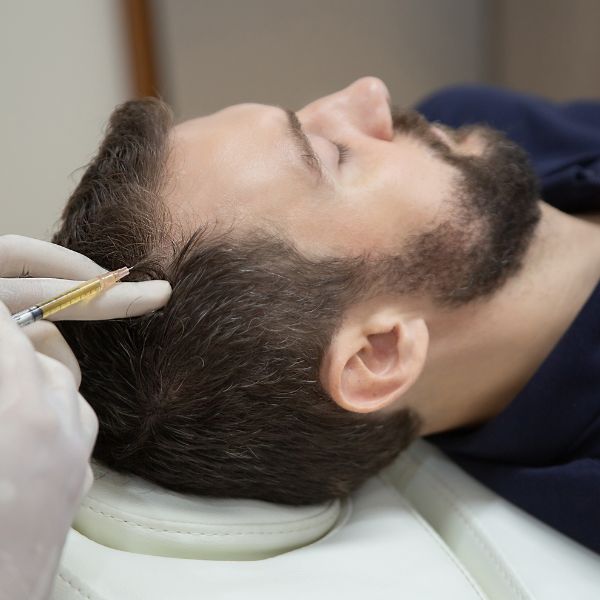
Steroid injections, which contain corticosteroids, are often utilized as a non-surgical treatment option for certain types of hair loss, such as alopecia areata. The injections work by suppressing inflammation and stimulating hair regrowth.
What are the best injections for hair loss?
According to studies, the results of treating patterned hair loss, such as androgenetic alopecia, with steroid injections vary depending on the concentration used. In addition, it has been found that betamethasone dipropionate and triamcinolone acetonide are the most effective treatments for alopecia areata [1].
Are hair growth injections safe?
Hair growth injections, which are generally considered a safe and effective treatment for hair loss, should only be administered by a qualified expert with the correct dosage.
Do steroid injections work for hair loss?
Since steroid injections are an effective treatment for hair loss, especially in cases of alopecia areata, it is vital to maintain consistency to achieve desirable results. This means that injections should be repeated every 4 to 6 weeks.
How is treatment performed?
Although steroid injections are known to have great effects on patchy hair loss, they must be prescribed and applied by a healthcare professional. The success rate for steroid injections in treating hair loss is usually between 70-80%, slightly lower than the success rate of hair transplant operations.
The treatment process involves multiple injections to the scalp until the desired results are obtained. This process can take several months to complete. It is important to note that a healthcare professional should determine the frequency and dosage of steroid injections to avoid any potential side effects.
4. Scalp Micropigmentation for Hair Loss
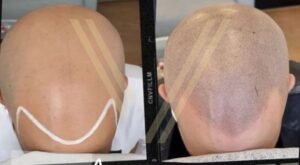
Scalp micropigmentation is a non-invasive solution to address the undesired appearance after significant hair loss. The process involves using micro-needles to deposit pigment into the scalp at the hairline, creating tiny dots that resemble hair follicles. This technique can create the appearance of a full head of hair or fill in thinning areas.
What is scalp micropigmentation?
Scalp micropigmentation (SMP), a cosmetic procedure, replicates the appearance of hair follicles on the scalp. This non-surgical technique involves depositing pigments in the scalp to create the illusion of a closely shaved head or to add density to thinning areas. SMP is a suitable solution for both men and women seeking to enhance their hair’s appearance, as it provides a natural-looking result.
Can hair grow back after micropigmentation?
SMP treatment differs from other methods in not promoting hair growth. Instead, it uses pigments to simulate existing hair follicles and give the impression of thicker hair. If you want to create a more dense hair appearance and do not mind having a buzzcut-like hairstyle, then micropigmentation may be a suitable option for you in the long term.
How much does scalp micropigmentation cost?
Scalp micropigmentation is a tattooing method that can be a more affordable option than hair transplant in some countries. The cost of scalp micropigmentation usually ranges from $3,000 to $4,500, depending on the size of the balding area and the number of sessions required. These prices are estimates and may vary depending on the extent of the balding area and the number of session extensions required.
How much does SMP cost in Turkey?
In Turkey, the cost of SMP varies depending on the size of the balding area. Usually, it ranges between $1500 and $4000, which is comparatively affordable compared to the cost of hair transplant operations. However, you may need more than one session to achieve long-lasting and natural-looking results.
Does scalp micropigmentation look real?
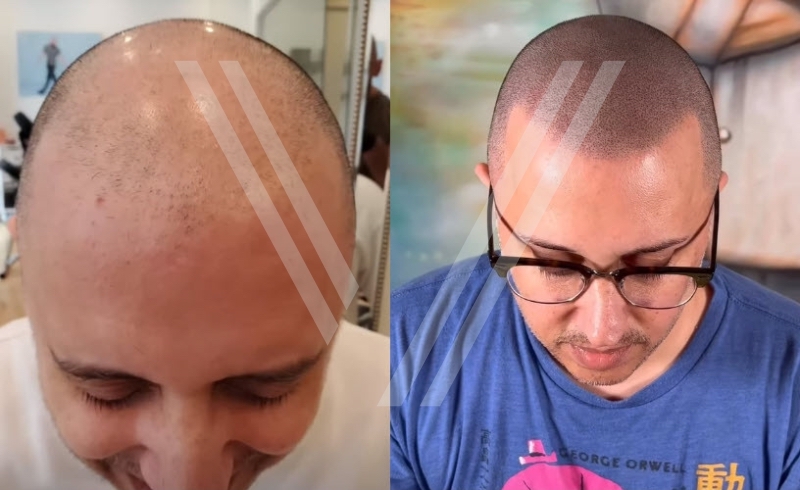
Micropigmentation gives natural-looking results depending on the skill of the surgeon. Therefore, it is crucial to carefully select a qualified and experienced clinic and surgeon for the procedure to ensure the best possible outcome.
Surgical Alternatives To Hair Transplant
There are both non-surgical and surgical alternatives for hair transplants. Typically, surgical options are recommended when hair loss has progressed to an advanced stage, particularly in the hairline area. In such cases, a surgical procedure may provide a better chance of achieving successful results.
Forehead Reduction for Hairline Lowering
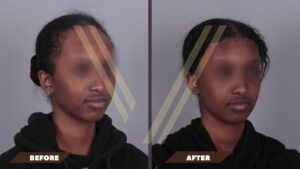
Forehead reduction, also known as hairline lowering surgery, is a cosmetic surgical procedure that involves repositioning the hairline to reduce the size of the forehead. This procedure can be an alternative to a full hair transplant for individuals who are primarily concerned with the position of their hairline. By enhancing facial proportions and creating a more balanced appearance, forehead reduction can help individuals achieve the desired features.
What is forehead reduction surgery?
Forehead reduction involves the surgical removal of excess skin from the forehead and the lowering of the hairline. This operation can be highly effective if you are experiencing a receding hairline.
How much is a forehead reduction?
Since forehead reduction is an invasive surgical procedure, the prices required for the procedure may go much higher than those of a hair transplant. On average, the cost of forehead reduction may range from $5,500 to $19,000, depending on various factors. These factors may include the clinic’s location, the expertise of the surgeon performing the procedure, and other related expenses.
How much is a forehead reduction in Turkey?
Undoubtedly, Turkey is a leading destination for medical tourism due to its competitive atmosphere, low exchange rate and cost of living, and the support of the Ministry of Health towards the medical industry. The average cost of forehead reduction surgery ranges from $4,000 to $9,000. Please do not hesitate to contact our team of medical consultants if you’re interested in learning more about the procedure.
Why is surgery cheap in Turkey?
Turkey has become a popular destination for medical procedures due to its low cost of living and favorable exchange rate. Additionally, the country’s high-quality clinics staffed by board-certified specialists and a competitive environment have been gaining popularity. The clinics in Turkey provide all-inclusive packages that are budget-friendly and cover all the requirements for the procedure.
How painful is forehead reduction?
Although the procedure is performed under general anesthesia and involves minimal incisions, compared to a hair transplant, forehead reduction is more painful. The procedure involves extracting skin tissue with a single follicular incision, pulling the hairline, and then suturing the area. You may experience discomfort after the procedure; however, it’s administered with a painkiller prescribed by your surgeon.
Maximize Results with Multiple Hair Loss Treatments

This approach can help combat hair loss from various angles and increase effectiveness. For instance, you could combine medication to stop hair loss with PRP to boost hair growth simultaneously. However, it’s essential to consult with your healthcare provider before taking action and follow their guidance accordingly. By doing so, you can ensure that you take the appropriate steps toward treating your hair loss.
Consulting with a Hair Loss Specialist: Choosing the Right Option
As with anything that happens on a daily basis, it is always better to seek an expert’s opinion, and the same goes for choosing the right option for an alternative to a hair transplant. By consulting with a hair loss specialist, you can share your expectations and healthcare information and get a personalized treatment plan that aims to achieve the best results. At Vantage, we prioritize our patients’ expectations and well-being, which is why our medical consultants are always ready to help. So, don’t hesitate to get in touch with us and take the first step towards a better future for your hair.
References:
- Pelin Ustuner, Ali Balevi & Mustafa Özdemir (2017) Best dilution of the best corticosteroid for intralesional injection in the treatment of localized alopecia areata in adults, Journal of Dermatological Treatment, 28:8, 753-761, DOI: 10.1080/09546634.2017.1329497 https://www.tandfonline.com/doi/abs/10.1080/09546634.2017.1329497

